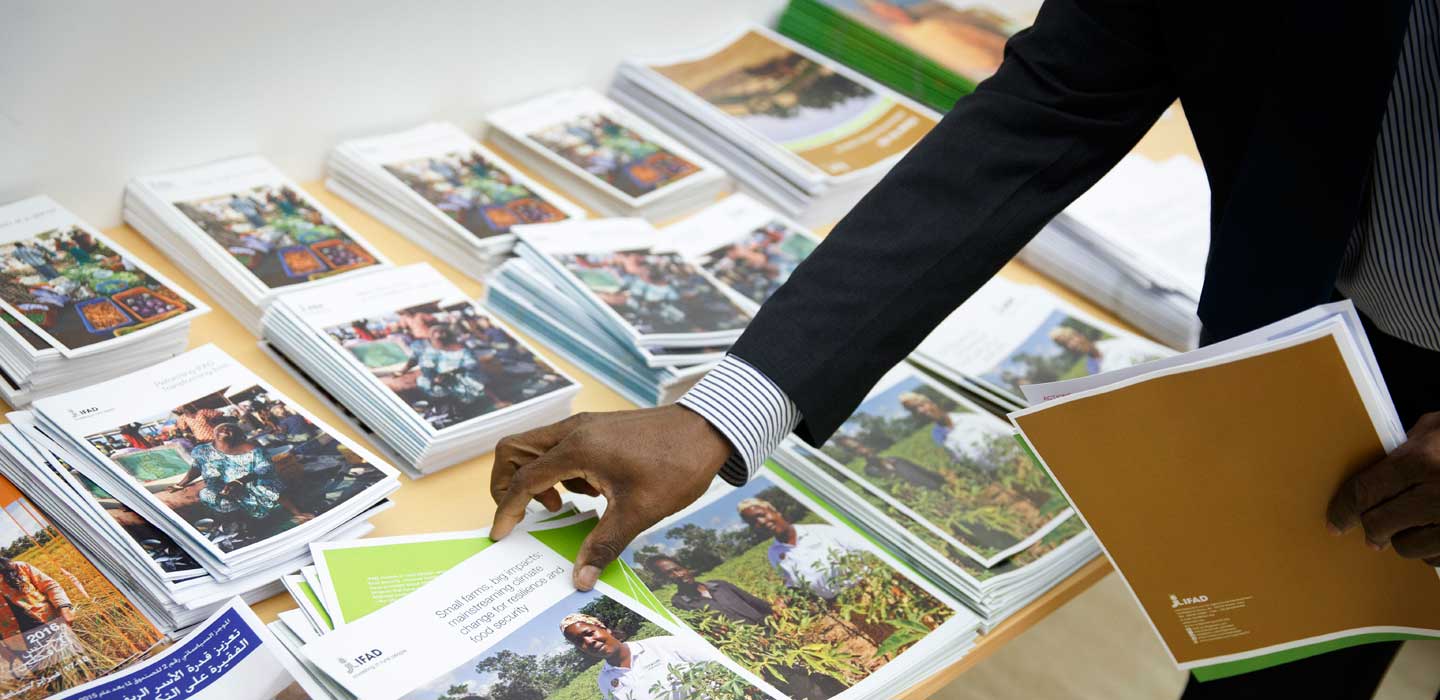Fichas Informativas

Fichas informativas
Visualización del menú
Search Results Filters
Resultados de la búsqueda
ASAP Chad factsheet
mayo 2015
Climate change is exacerbating natural resource degradation and reducing the potential of productive lands. For example, rural farmers have to contend with climate shocks such as drought, rainfall deficits, floods and locust invasions. These shocks are reducing yields and making the cropping seasons hard to predict for traditional farmers. Traditional resilience strategies are no longer as effective as they were and the lean season is becoming more challenging to smallholder farmers.
ASAP Lesotho factsheet
mayo 2015
Lesotho ranks 158 out of 186 in the UNDP Human Development Index. Poverty is rife, and it is concentrated in the rural areas of the country, with the greatest incidence in the mountain areas. Lesotho's rural economy is dominated by livestock production. Lesotho's chief export is directly related to this livestock, that of wool and mohair production. Lesotho is the second largest global producer of mohair, and this counts towards a large percentage of the country 's Gross Domestic Product (GDP).
Only high quality wool and mohair can be exported, and this is dependent on the quality and health of the livestock. The main factor in raising high quality livestock is maintaining healthy rangelands.
Only high quality wool and mohair can be exported, and this is dependent on the quality and health of the livestock. The main factor in raising high quality livestock is maintaining healthy rangelands.
Investing in rural people in Cuba
abril 2015
IFAD recently resumed operations in Cuba after more than 20 years. The official launch of the Cooperative Rural Development Project in the Oriental Region (PRODECOR) took place on 30 October 2014.
Given the challenges the agricultural sector faces, IFAD is in a position to serve as one of the country’s strategic partners, contributing to the ongoing modernization process.
Cooperatives in Cuba are key actors in ensuring food security, as they represent 80 per cent of the country’s agricultural production. The Government of Cuba has expressed interest in re-establishing the partnership with IFAD with a view to modernizing agriculture.
This will be achieved mainly through developing non-state smallholder farmer business cooperatives. In this respect, IFAD is well placed to provide technical assistance through its projects to increase the physical, human, social and environmental assets of cooperatives.
Given the challenges the agricultural sector faces, IFAD is in a position to serve as one of the country’s strategic partners, contributing to the ongoing modernization process.
Cooperatives in Cuba are key actors in ensuring food security, as they represent 80 per cent of the country’s agricultural production. The Government of Cuba has expressed interest in re-establishing the partnership with IFAD with a view to modernizing agriculture.
This will be achieved mainly through developing non-state smallholder farmer business cooperatives. In this respect, IFAD is well placed to provide technical assistance through its projects to increase the physical, human, social and environmental assets of cooperatives.
Gender and rural development brief: West and Central Africa
marzo 2015
Three quarters of the poor population in West and Central Africa – about 90 million people – live in rural areas and depend on agriculture for their livelihoods. More than 60 per cent of the active population work in the agriculture sector. Women’s share – estimated at 70 per cent in the region as a whole and 89 per cent in the Sahel – continues to rise. Socio-politically, West and Central Africa is still very fragile, with the highest concentration of countries with IFAD operations. Despite this fragility and the poverty that affects over half the population, virtually all countries in the region have made considerable progress over the past decade, particularly in education, health and income redistribution.
Reviving Tradition, Boosting Employment
marzo 2015
In Tunisia, young women managed to set up their own small enterprises that produce and sell Al margoum, a traditional embroidery of Berber origin that was on the verge of disappearing.
Managing natural resources comprehensively and sustainably to combat poverty in pastoral communities
marzo 2015
In Djibouti, pastoral communities have made a clearimprovement in their living conditions with better access to water and strengthened capacity in natural resources conservationa and management.
Starting Rural Businesses after the War
marzo 2015
In Bosnia and Herzegovina, a project co-sponsored by IFAD helped the war-ravaged country make the transition from immediate relief and rehabilitation to long-term sustainable development.
A gender-balanced model for community development
marzo 2015
In Yemen, a community-led project for fostering women's empowerment has imporoved the food security of thousands of landless and smallholder famers living in the poorest areas of the country.
From 2004 to late 2012, the Dhamar Participatory Rural Development Project, cofunded by IFAD and the Government of Yemen, addressed the needs of the rural population in the Dhamar Governorate. By ensuring the participation of rural people in the decision-making processes and income-generating activities, the project improved the food security of substience farmers and their families in the villages of Dhamar.